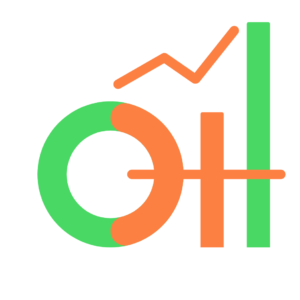Comparing Axis Bank, Kotak Mahindra Bank, IndusInd Bank, and ICICI Bank offers an insightful view into the diverse landscape of Indian banking, each with its unique strengths, strategies, and market positioning. This analysis delves into various facets, including financial indicators, stock price trends, business models, future strategies, and more, providing a holistic view to understand these banks’ standings in the competitive market.
Financial Indicators and Stock Price Trends
Axis Bank: As of the last fiscal year, Axis Bank has shown robust growth in net interest income, with a commendable increase in its net profit margin. The stock has seen moderate volatility, with a general upward trend in the past year, reflecting investor confidence and strong financial performance.
Kotak Mahindra Bank: Kotak Mahindra stands out for its high-quality asset portfolio and superior net interest margin. Its stock has been relatively stable, with gradual increases highlighting steady growth and prudent risk management.
IndusInd Bank: IndusInd Bank has faced challenges in asset quality, impacting its financial indicators. However, recent efforts to bolster its balance sheet have been positively received, as seen in the gradual recovery of its stock price, though it remains somewhat volatile.
ICICI Bank: ICICI Bank has shown impressive growth in both net interest income and profits, driven by aggressive retail banking expansion and digital initiatives. Its stock has experienced significant upward momentum, reflecting strong operational performance and market optimism.
Business Models and Segments
Axis Bank operates across a wide range of banking services, including retail, corporate, and international banking, with a significant emphasis on leveraging technology to enhance service delivery.
Kotak Mahindra Bank focuses on a diversified financial services model, engaging in personal finance, investment banking, life insurance, and wealth management, apart from traditional banking.
IndusInd Bank has a strong presence in commercial, transactional, and electronic banking, specializing in retail banking and wealth management, with targeted services for NRI and global Indians.
ICICI Bank is known for its vast retail banking footprint and digital banking initiatives, with significant operations in insurance, asset management, and venture capital services.
Future Strategy and Market Positioning
Axis Bank aims to expand its digital banking services and retail banking segment, enhancing customer experience and operational efficiency.
Kotak Mahindra Bank focuses on expanding its digital offerings and cross-selling financial products to consolidate its customer base and grow its asset quality.
IndusInd Bank is concentrating on recovering its asset quality and expanding its digital banking footprint to regain market confidence and drive growth.
ICICI Bank is aggressively pursuing digital transformation, aiming to become a leader in digital banking, while also expanding its retail and SME lending.
Strengths and Weaknesses
Axis Bank: Strength in diversified banking services and digital initiatives; weakness in past controversies affecting brand image.
Kotak Mahindra Bank: Strong asset quality and customer-centric approach; however, limited international presence compared to peers.
IndusInd Bank: Niche focus on targeted customer segments; however, asset quality has been a concern.
ICICI Bank: Extensive retail banking network and digital innovation; however, faces stiff competition in the digital space.
Profit Formula, Investors, and Customers
All four banks follow a profit formula centered around net interest margins, fee-based services, and cost efficiency. They attract a wide range of investors, from institutional to retail, given their solid financial performances and strategic growth plans. Their customer bases vary, with Axis and ICICI focusing more on retail customers, Kotak on affluent clients and wealth management, and IndusInd on specialized banking services.
Market Capitalization and Recent Developments
As of the latest data, ICICI Bank leads in market capitalization, followed by Kotak Mahindra, Axis, and IndusInd. Recent developments include Axis Bank’s acquisition strategies to expand its footprint, Kotak’s digital banking innovations, IndusInd’s focus on improving asset quality, and ICICI’s aggressive digital transformation and retail banking expansion.




